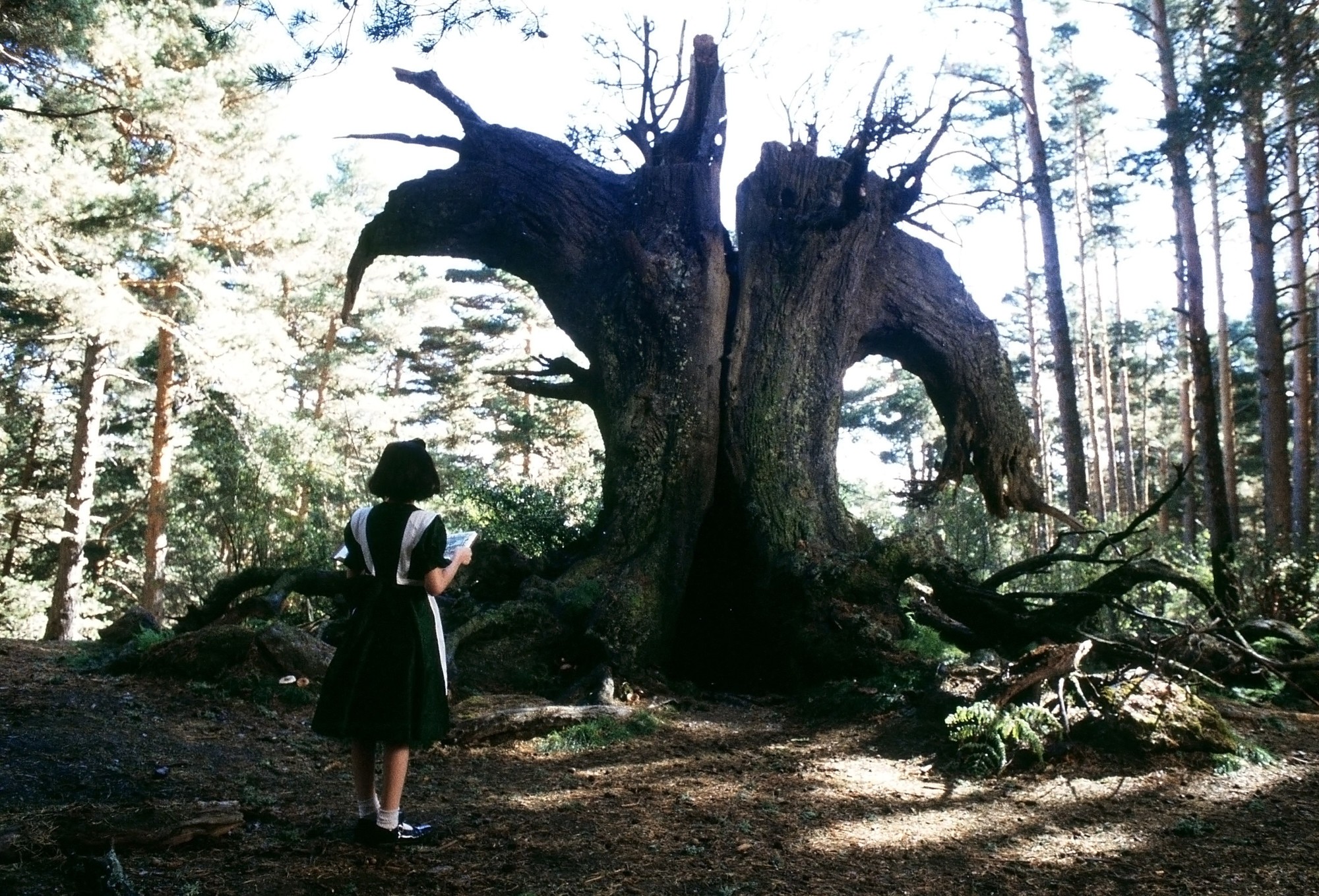Pan’s Labyrinth (2006)

Guillermo del Toro’s “Pan’s Labyrinth” (2006) is a dark and enchanting fairy tale set against the backdrop of post-Civil War Spain in 1944. Seamlessly blending elements of fantasy and historical drama, the film captivates audiences with its rich storytelling, stunning visuals, and profound exploration of the power of imagination amidst the harsh realities of war.
The narrative unfolds through the eyes of Ofelia (played by Ivana Baquero), a young girl who moves with her pregnant mother to a rural military outpost commanded by her new stepfather, the sadistic Captain Vidal (played by Sergi López). Escaping the brutality of her surroundings, Ofelia discovers a labyrinth near the outpost, where she encounters Pan (played by Doug Jones), a mystical faun who believes her to be the reincarnation of a lost princess.

One of the central themes of “Pan’s Labyrinth” is the contrast between fantasy and reality, and the transformative power of imagination in the face of oppression and despair. As Ofelia navigates the trials set forth by Pan to prove her royal lineage, the film interweaves her fantastical quests with the harsh realities of Vidal’s authoritarian rule and the guerrilla resistance fighters hiding in the nearby forests. Guillermo del Toro masterfully juxtaposes these dual narratives, inviting viewers to contemplate the ways in which storytelling and myth can offer solace and resistance in times of adversity.
The character of Ofelia serves as the emotional anchor of the film, embodying innocence and resilience in equal measure. Ivana Baquero delivers a remarkable performance, capturing Ofelia’s courage and curiosity as she navigates the treacherous terrain of both the physical world and the realm of fantasy. Her journey from a lonely girl seeking refuge in fairy tales to a brave heroine confronting the darkest aspects of human nature underscores the film’s exploration of the power of imagination to transcend suffering.

Sergi López’s portrayal of Captain Vidal provides a chilling counterpoint to Ofelia’s innocence. Vidal represents the brutal reality of fascism and the corrosive effects of unchecked power, embodying a ruthlessness that extends to his own family and subordinates. His obsession with control and authority stands in stark contrast to Ofelia’s defiance and belief in the possibility of magic and justice.
Thematically, “Pan’s Labyrinth” delves into the complexities of morality and choice in the face of tyranny. The film challenges viewers to confront the consequences of blind obedience and the courage required to resist oppression, drawing parallels between Ofelia’s mythical trials and the real-world struggles of the Spanish resistance against Franco’s regime. Guillermo del Toro’s direction infuses the film with haunting imagery and symbolic motifs that enrich its narrative layers, from the mystical creatures that inhabit Ofelia’s fantasies to the visceral horrors of war and human cruelty.

Moreover, “Pan’s Labyrinth” celebrates the enduring power of fairy tales and folklore as vehicles for social critique and personal transformation. Del Toro pays homage to Spanish myth and folklore, infusing the film with elements of Spanish culture and history that resonate with deeper political and social themes. The labyrinth itself becomes a metaphor for the intricate pathways of human experience, where choices have profound consequences and where the line between reality and imagination blurs.
In conclusion, “Pan’s Labyrinth” (2006) stands as a cinematic tour de force that transcends genre conventions to deliver a profound and visually stunning exploration of the human spirit in times of adversity. Through its compelling narrative, rich symbolism, and evocative performances, the film invites viewers to embark on a journey of self-discovery and moral reckoning amidst the ruins of war. Guillermo del Toro’s visionary direction ensures that “Pan’s Labyrinth” resonates as both a timeless fairy tale and a poignant allegory for the enduring power of hope, courage, and imagination.











